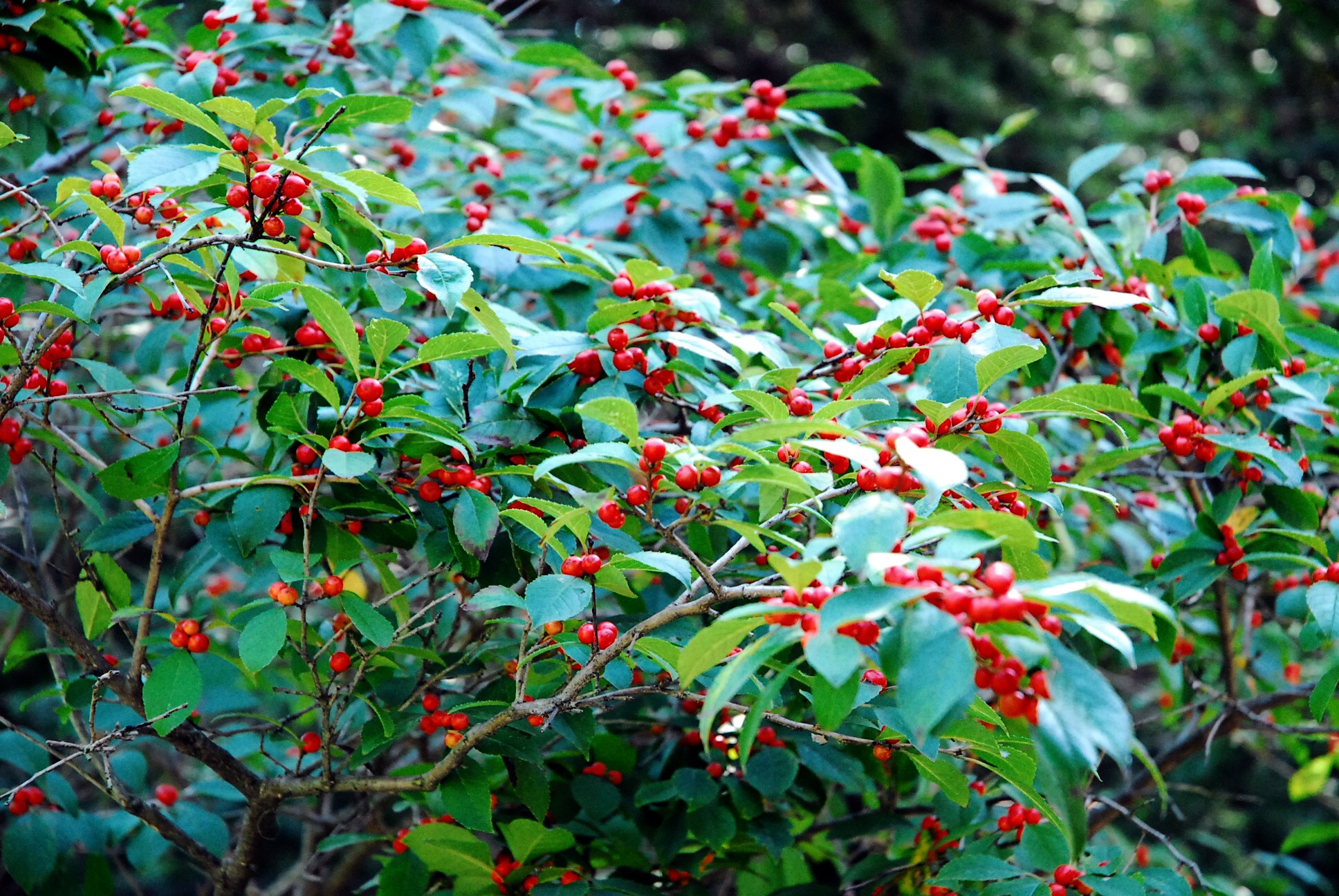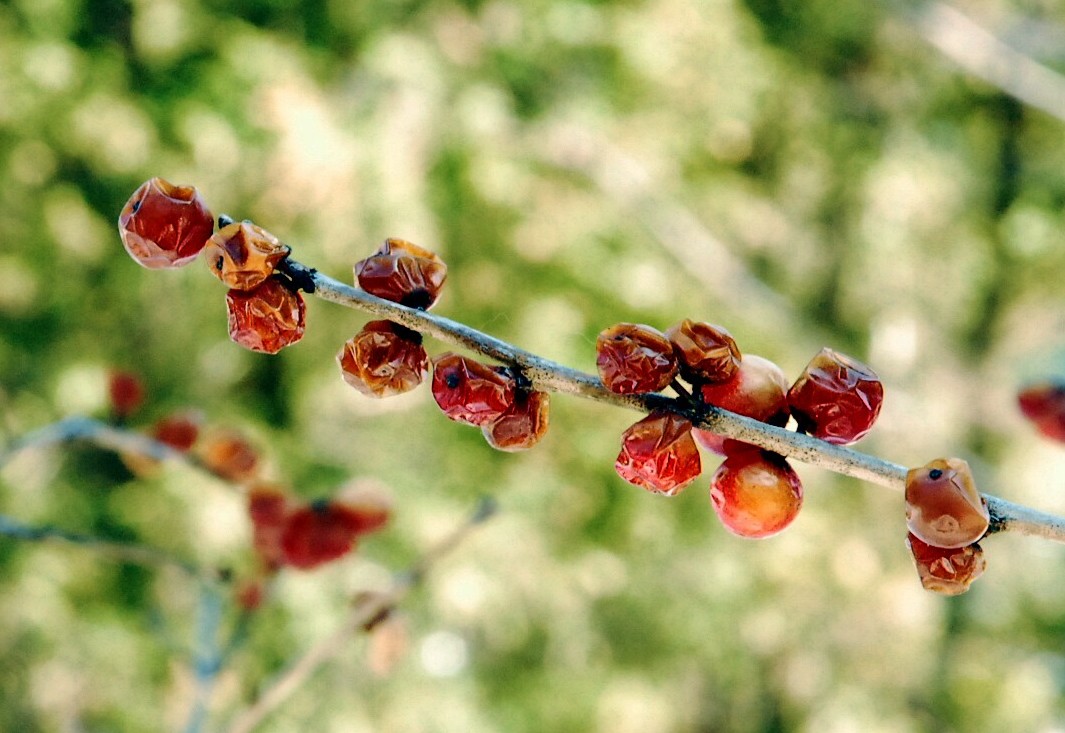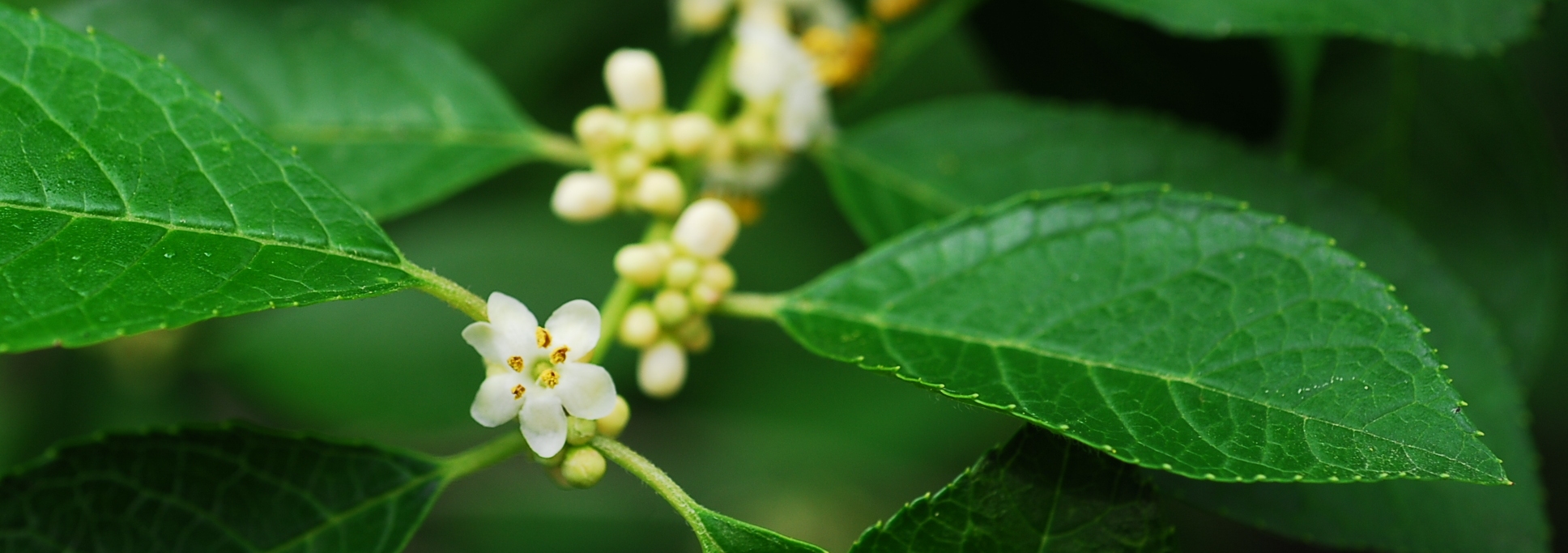
SCIENTIFIC NAME
Ilex verticillata
DESCRIPTION
Winterberry typically grows to three or four metres tall. Its leaves are widest above the middle with a pointed tip with fine teeth along the edges. Flowers are small and white and either male or female, with only one flower type per plant. Winterberry fruit is bright red-orange and stay on the tree long after the leaves have fallen. They tend to be plump for the beginning of winter but shrivel up by the end of the season.
RANGE
Eastern Canada is home to a single species of holly that is bright during the winter months and is becoming popular with gardeners.
HABITAT
Winterberries naturally grow in, and therefore prefer, wet acidic soil, but they can handle well-drained soil found in most gardens. They grow well in either full sun or partial shade.
DIET
BEHAVIOUR
undefinedPRIMARY ECOSYSTEM ROLES
Many wild animals depend on these berries to survive Canadian winters, including early spring arrivals that have to wait a few more weeks before warm weather and other food presents itself. Birds such as robins, cardinals, grouse, bluebirds, thrushes, waxwings, white-throated sparrows, northern flickers and grey catbirds feast on winterberries. Sometimes even a black bear or white-tailed deer will nibble on them.
Beneficial insects like our native bees and flies go to winterberry flowers for food and pollinate the plants in return.
Photo Gallery
Text by Sarah Coulber
Photos by Roger Thibault and Theo Wouters
Many people are familiar with the English holly with its bright red berries and glossy, prickly leaves. It is often associated with Christmas, partly due to its cheery decorative qualities that brighten the spirit in the dark winter months and partly because of its historical lore, first with Celtic mythology and later with Christian symbolism.
 | |
|
Winterberry's bright red berries and deep green leaves will brighten up any garden | |
If you're looking to add something similar to your garden, then look no more. Although lacking in prickly leaves, Eastern Canada is home to a single species of holly that is bright during the winter months and is becoming popular with gardeners. Winterberry (Ilex verticillata) is attractive, tolerant of growing conditions and small enough to suit many gardens.
Appearance
Winterberry typically grows to three or four metres tall, although there are cultivars with varying heights and widths. It can sucker and spread to form thickets, but if you prune it, it could grow as a single tree or shrub instead.
Its leaves are widest above the middle with a pointed tip with fine teeth along the edges. Flowers are small and white and either male or female, with only one flower type per plant. They typically bloom in the spring, but southern variations of this plant are said to bloom a bit later.
 |  | |
| Ripe berries at the beginning of winter
|
Shrivelling berries near the end of winter |
Winterberry fruit is bright red-orange and stay on the tree long after the leaves have fallen. They tend to be plump for the beginning of winter but shrivel up by the end of the season.
Uses
Aboriginal Peoples have used parts of Ilex verticillata as treatment for fever and skin problems. Due to this plant's high caffeine content, there is a danger in using this plant without sufficient knowledge, as its seeds, bark, leaves and especially berries can cause temporary poisoning if a large amount is consumed.
Florists often use winterberry for floral arrangements and those who enjoy winter crafts use it for wreaths and window boxes.
 | |
|
Robins are one of many birds who feast on winterberries | |
Many wild animals depend on these berries to survive Canadian winters, including early spring arrivals that have to wait a few more weeks before warm weather and other food presents itself. Birds such as robins, cardinals, grouse, bluebirds, thrushes, waxwings, white-throated sparrows, northern flickers and grey catbirds feast on winterberries. Sometimes even a black bear or white-tailed deer will nibble on them.
Beneficial insects like our native bees and flies go to winterberry flowers for food and pollinate the plants in return.
(Caution: CWF is not recommending the use of these plants for medicinal or food purposes. Many plants are poisonous or harmful if eaten or used externally. The information on food and medicinal value is only added for interest. This information has been gathered from books and its accuracy has not been tested by CWF.)
Propagation
 | |
|
Winterberry flowers growing in the leaf axils | |
If you want your plant to produce fruit, ensure you have both a male and female plant that grow near each other. William Cullina speaks of his experience with distances in his book Native Trees, Shrubs and Vines. While some cultivators have had experience with trees as far apart as 200 feet, William advises staying within 50 feet or so, to be on the safe side. You also want to make sure they bloom at the same time.
While easy to transplant, winterberries are not the easiest to grow from seed. If you want to have a try, however, you may wish to scratch the seeds a little bit with some fine sandpaper, to help remove some of their tough seed coat.
Seeds can be kept warm and then cold, each time for two to four months in moist conditions such as in a Ziploc bag with damp vermiculite. If you don't want to bother with all that, just plant the seeds outside and wait. They should germinate in three years.
Care
 | |
|
Ripening berries | |
Winterberries naturally grow in, and therefore prefer, wet acidic soil, but they can handle well-drained soil found in most gardens. They grow well in either full sun or partial shade.
Similar species
Another eastern species in the holly family, inkberry (Ilex glabra) has dark berries, as the common name suggests. It, too, likes wet soil, but can also be found growing in dry sandy areas. It doesn't usually grow as tall as winterberry.
False holly, also called mountain holly, is similar to winterberry and is also in the holly family. This plant, however, is in a different genus (Nemopanthus mucronatus). Its berries are darker and are usually gone by the time winter has fully set in. Its flowers and fruit have a long stem of up to 2.5 cm, unlike winterberry whose flowers and fruits appear on very short stalks. It can grow in a variety of conditions and is usually shorter than winterberry, growing under three metres tall. It is also an eastern species.
With special thanks to Theo Wouters and Roger Thibault for their lovely photos and helpful insights.
